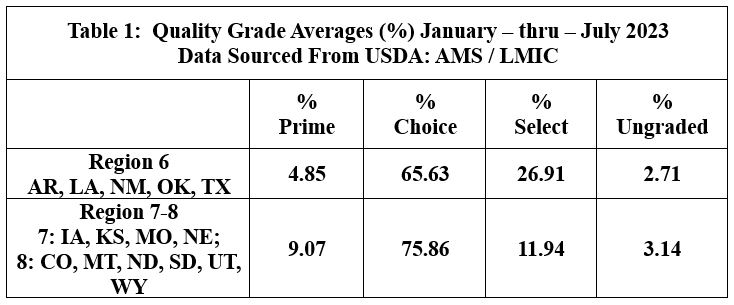Speer: Blah-Blah Bloggers and Texas Cattle Feeders

Catfished: Did you read Steve Cornett’s recent column, Cowboy Conspiracy Theorists Get ‘Catfished’? It’s great journalism. The discussion highlights a supposed (i.e. conspiracy theory) packer directive to stomp out the market’s upward momentum (with seeming emphasis for Texas). The whole thing was a ruse, but some commentators took it and ran. They wanted it to be true.
Texas: But along the way, some of the “catfished” commentators didn’t just beat up the packer, they also leveraged it to disparage cattle feeders – especially those in the southern plains.
For them, the southern (especially Texas) feeders don’t fight hard enough. I recall some commentary earlier this year about how feeding cattle in the south is wasted money. The southern discount has become too wide - therefore, it’s impossible to make money in the region. The narrative being Texas feedyards are too passive and part of the (supposed) market problem.
Let’s tackle that step-by-step and see where we end up.
Cattle: We need to start with the cattle and the underlying value differences across the regions. Table 1 below details the average quality grade mix (through July) between USDA’s Regions 6 and 7-8, respectively. Cattle in Iowa grade ~85% Choice or better; that beats Texas (~70% Choice or better).
Carcass Dollars: As such, there’s a value difference across the regions. We’ll utilize average cutout values to translate the grading differences to dollars. And to ensure apples-to-apples comparison, let’s work with a 1400-lb steer producing a 890-lb carcass. As outlined in Table 2 below, the slaughter mix in region 7/8 hold a ~$32/head advantage over Region 6. Let’s call that ‘fair value’. And the fed market should reflect that difference.
Cash Market: The fed market in Iowa has averaged $173.45 through July; the Texas cash market running $169.40. The difference (basis 1400 lb steer) equates to cattle in Texas being discounted nearly $57/head compared to Iowa; that puts Texas nearly $25/head behind the ‘fair value’ difference we derived in step 2. I hear the commentators now, “I told you the Texas guys are getting ripped off.”
Formula Adjustment: But wait…it’s fair to say most of the cattle in Texas get sold on a formula arrangement; let’s call it 75% of the total mix. The standard formula premium is $2/cwt (or $28/head) (see USDA:AMS LM_CT215). That formula kicker at 75% provides ~$21/head across the entire pool. That gets us closer, but the Texas cattle feeder is still $4/head back of the cash marketer in Iowa.
Basis Adjustment: Many of the formula critics also like to complain about “basis jumpers”. Those same formula marketers are typically more disciplined hedgers. Let’s conservatively assume half the cattle get hedged. And average basis through July has equaled $.88/cwt or ~$12/head. Half hedged means another $6/head. Now, the Texas feedyard is $2/head better compared to the Iowa cash marketer.
Business First, Market Second: About 18 months ago, I wrote a column describing the principles of operational innovation in the feeding sector. I explained, “there’s a reason cattle feeders have spurred the downward trend in cash trade; it’s part of doing business better.” And when that happens across bigger volume it adds up quickly – and tacks on even more value.
Blah-blah: We can bicker about the dollars and/or assumptions here and there. But the cattle feeders in Texas? Turns out they got this. The bloggers / vloggers, maybe not so much.
Steve Cornett reminds us to not “believe everything you read [or hear] on the internet no matter how much you want it to be true. There is no blogger [slash vlogger] code of ethics. Many of them just blah-blah blog.” He’s exactly right: too much blah-blah, not enough substance.
Nevil Speer is an independent consultant based in Bowling Green, KY. The views and opinions expressed herein do not reflect, nor are associated with in any manner, any client or business relationship. He can be reached at nevil.speer@turkeytrack.biz.









